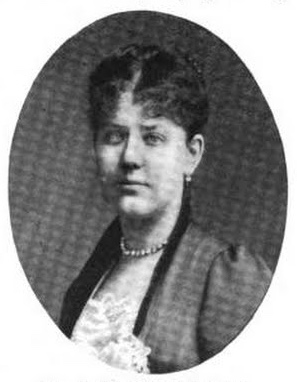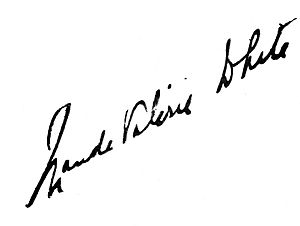Maude Valérie White facts for kids
Maude Valérie White (1855 – 1937) was a composer born in France. She became one of England's most successful songwriters. Her music was popular during the Victorian era.
Contents
Early Life and Musical Training
Maude Valérie White was born near Dieppe, France. Her family moved to England when she was just one year old. She grew up in Heidelberg, Paris, and England. Maude started playing the piano very young. By the age of seventeen, she had already written her first song.
She studied music in London with Oliver May. Later, she learned about counterpoint and harmony with W. S. Rockstro in Torquay. In 1876, White went to the Royal Academy of Music. She convinced her mother to let her study music as a career. At the Academy, she studied composition with George Alexander Macfarren. She wrote music for poems in English, German, and French.
In 1879, Maude White made history. She was the first woman to win the important Mendelssohn Scholarship. Her father had died when she was a child. When her mother died in 1881, White was very sad. She traveled to Chile to be with her sister and get better.
Becoming a Professional Musician
White returned to London in 1882. She then started her career as a professional musician and composer. She earned money by teaching piano. She also wrote songs and performed them at parties and concerts. Sometimes, she gave recitals with Mary Augusta Wakefield, another musician. Later, she used her language skills to translate books and plays.
Musical Style and Compositions
In 1883, White went to Vienna for six months. She studied with Robert Fuchs. He tried to get her to write more instrumental music, but she mostly focused on songs. Her music from this time has careful word settings. It also features big, flowing melodies and a strong rhythm.
One of her most famous songs is 'So we'll go no more a-roving'. She wrote this in 1888, based on a poem by Lord Byron. Another well-known song is 'My soul is an enchanted boat'. This song, published in 1882, uses words by Percy Bysshe Shelley. People have called it one of the best songs in English.
In the 1890s, her music changed. It began to include sounds from her travels around the world. She also tried to make her songs sound like German Lieder. Her ballet, 'The Enchanted Heart', showed the influence of Russian ballet. Later, her works became more dreamlike. Examples include 'La Flûte Invisible' (from Victor Hugo) and 'Le Foyer' (from Paul Verlaine). She created these dreamy feelings with repeated musical patterns.
Other popular songs she wrote include:
- Come to me in my dreams
- Ye cupids droop each little head
- Until (semper fidelis)
- Mary Morison
Later Years and Legacy
In her later years, Maude White wrote two books about her life. These were Friends and Memories, published in 1914, and My Indian Summer, published in 1932. She kept organizing concerts to perform her music. Many people helped her, including supporters, students, and performers. Because of them, her music is still remembered in British history. She passed away in 1937 at the age of 82.
She was buried in the churchyard of St. Edward's Roman Catholic Church in Sutton Green, Surrey.
See also
 In Spanish: Maude Valerie White para niños
In Spanish: Maude Valerie White para niños



